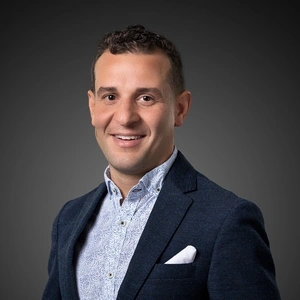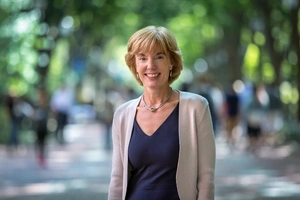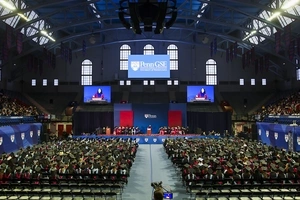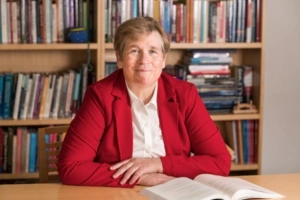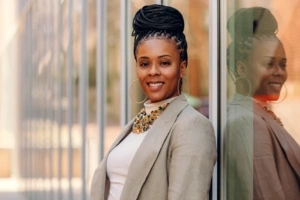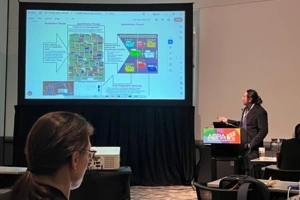Faculty Expert

It concerned Penn GSE Professor Nelson Flores that “as a Latino who works in bilingual education,” he had “encountered a range of different descriptions of communities that felt wrong.” Years of research into the language used to describe Latinx students culminated in his book, Becoming the System: A Raciolinguistic Genealogy of Bilingual Education in the Post-Civil Rights Era.
As an undergraduate at Swarthmore College, he was taught that bilingual Latinx students may have mastered “social language” but not academic language. He was told that his job as an English as a second language (ESL) teacher was to fix what was wrong with the students’ academic language.
“I was supposed to fix a deficit,” said Flores. “But as I got to know my students more, I got to see that they engaged in a range of complex language practices all the time, and that was what motivated me to start graduate work.” He earned a master’s degree from Lehman College and later a Ph.D. from The Graduate Center of the City University of New York. “It took me a long time to really begin to lay the foundations for understanding what was going on.”
In his book, Flores outlines the historical forces that “framed Latinx communities as deficient.” He examined the language used by various stakeholders to describe Latinx students and their language. He also traced how Latinx educators adopted a deficit framework to “get a seat at the table.”
Bilingual education was embraced during the 1960s by liberals and more leftist radicals. But, according to Flores, “there was never this moment in time where these deficit perspectives didn't exist.” Radicals saw the deficits as the consequence of colonialism and white supremacy. Liberals attributed poorly developed language skills to a lack of linguistic resources in the home. Flores found little evidence that conservative leaders considered the problem at all. Bilingual education thus became what liberals and radicals agreed upon: a way to address Latinx students’ perceived language deficits.
In 1974, the ASPIRA Consent Decree “established the right of New York City public school students with limited English proficiency to receive bilingual education.” Because bilingual programs were publicly funded, there needed to be a way to sort students into eligible and ineligible groups. The consent decree focused on enrolling students based on standardized test scores. That same year, the U.S. Supreme Court decision Lau v. Nichols led educators to assess students by looking at what was spoken at home. If the home language was not English, then the student was evaluated further. Advocates like ASPIRA wanted to increase the number of students enrolled in bilingual programs; funding agencies wanted to limit them. Tests and criteria were developed to support either perspective and argued over for years.
Flores explains in the book that two years later, NYC students scoring below the 20th percentile on a standardized English test were given the same test in Spanish. If they did better in Spanish, then they were deemed eligible for bilingual education. But if they did not do well in either language — and over 10,000 students were already identified who did not — then the fear was that these “semilingual” students could not function in any language.
When Flores taught ESL 30 years later in a Bronx high school, he encountered many “long-term English learners” who had spent their entire education segregated out of mainstream classes. The students could communicate well enough when given the chance to express themselves. So why were they being viewed as deficient?
In the introduction to his book, Flores laments that he had “few tools to address the root cause of the marginalization of … the many Latinx people left behind in low-income segregated neighborhoods.” Bilingual education would not address the systemic racism, poverty, housing instability, and trauma that seemed far more urgent to his students.
When he first started working on his book, Flores thought that he could resurface 1960s radical thinking to get beyond deficiency models: “My original argument was going to be, ‘Let's reclaim this radical tradition.’” But as he dug deeper into the linguistic “genealogy” of racism and the language deficit model, he realized he didn’t “want to reclaim a tradition that was already premised on the same deficit framework.”
Flores concludes his book on a personal note, reflecting on how he is making his rejection of the raciolinguistic deficit model actionable. “Once we know that history, it becomes kind of an ethical stance to then say, ‘Well, we don't want that history. We want to develop new histories.’”
He is starting by helping Latinx students “develop their own voice, their own unique style, their own unique rhetoric that reflects their own identities and their own sense of how they want to navigate the world.”
Media Inquiries
Penn GSE Communications is here to help reporters connect with the education experts they need.
